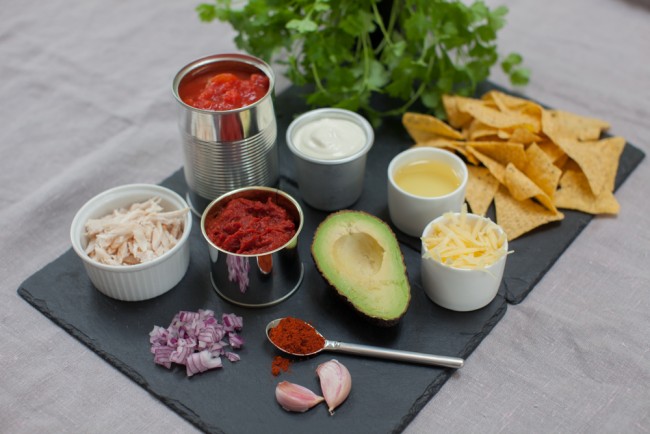“I’m fascinated by our relationships with tinned food, and what those tins say about us. Our abilities, our fears, our emergencies, and our comfort zones […] I still fill my shopping trolley with tins – they are an excellent source of nutrition, convenient (who has time for peeling?) and with a long shelf life, tinned ingredients can be thrown together at a moment’s notice to make a variety of tasty meals for everyone.”
Jack Monroe
Fresh produce is often cited as the holy grail of a balanced diet and well-rounded nutrition, but you may be surprised to find that canned fruit and vegetables offer as much goodness as their freshly picked counterparts.
In fact, canned wholefoods can sometimes be more nutrient-dense than fresh, particularly if you’re prone to leaving several days between buying and eating; or when a recipe calls for a fruit or vegetable that’s not in season or has to be imported after harvest.
Canned fruits and vegetables are processed and canned within hours of being harvested which preserves nutritional value. Levels of protein, carbohydrates, and fat are unaffected by the canning process and most minerals and vitamins including A, D, E, and K, are also retained within the can.
In recent years, high profile chefs including Great British Bake Off winner Nadiya Hussein and cookbook author and influencer Jack Monroe have championed the health benefits of canned foods alongside their convenience and affordability, making them highly recommended not only for family cooking but all those who want great tasting menus which tick boxes for both nutrition and time-saving. And let’s face it, isn’t that all of us?
If you’re still on the fence, you might be interested to know that a 120g serving of canned tuna contains around 13g grams of protein which is the same amount you would benefit from in fresh tuna. Canned salmon, herring, and mackerel have very high levels of the heart-healthy omega 3 fats – including more than some fresh white fish.
Interestingly, if you can find canned fish with edible bones that have been softened during the canning process, these products contain much higher levels of calcium than you would from fresh fish, from which you would have to remove the bones.
One of our favourites is this recipe for Thai Mackerel Fishcakes which contains canned iron-rich mackerel and potatoes rich in vitamins – or why not try this Salmon and Broccoli Quiche for a big hit of brain food, with canned salmon high in omega 3 – both also perfect picnic foods which will keep a day or two after cooking.
If you’re looking to feed a crowd, we’d also highly recommend Jack Monroe’s Sicilian style fish stew – just double or triple the quantities as required. “It’s beautifully versatile,” says Jack, “You can use any canned beans in place of the chickpeas, wine instead of beer, and any tinned veg that takes your fancy. It’s a complete meal in a bowl too, so you don’t need to worry about side dishes. Just some nice bread and butter will do!”
Which brings us to another canned champion of a balanced diet – beans. A complete nutritional package, canned beans (and there a plenty of types to choose from) are an easy and inexpensive source of plant-based protein and fibre. A national favourite (not even top chefs bother to make their own baked beans when canned are so good) beans help reduce hunger, alongside providing a selection of vitamins and minerals including potassium, iron and magnesium. A can of beans could contain around 6g each of fibre and protein!
We love beans in casseroles (check out this comforting Pork & Fennel with Red Wine & Borlotti Beans Casserole), soups (including this weekday favourite Tuscan Bean Soup) and salads (this Borlotti Bean and Tuna Salad with Pine Nuts makes for a filling and nutrient dense meal).
Including canned food in a variety of recipes can be both a nutritious and an affordable choice. For fresh ideas on how to use your ingredients, home cooks can request a set of free recipe booklets from the Canned Food UK website to build a tried and tested storecupboard recipe bank. Choose from Canned Food Family Favourites, Billy & Jack Plant Based Food Suppers, Canned Food Student Favourites, Billy & Jack Canned Food Dinner Party Masterclass and Canvenient Bites.
And of course, the full collection of recipes including those written by Jack Monroe can be found online at www.cannedfood.co.uk – so stock up and dig in, it’s all canned goodness.
DID YOU KNOW…
One American study recorded that both adults and children who eat canned fruits and vegetables as part of a regular balanced diet had a higher intake of nutrients including potassium and magnesium, alongside a higher-quality diet overall, compared to those who do not eat canned produce.
TOP 5 STORECUPBOARD ESSENTIALS
Chickpeas and lentils: these are a great source of fibre, protein and vitamins as well as being really versatile. Easily included in soups, stews, curries and salads we recommend keeping a range in stock as a reliable and healthy base ingredient for home cooking
- Coconut milk: a guilt-free source of healthy fat and a dairy alternative, this is ideal for creamy sauces and soups
- Tomatoes: canned tomatoes are a British storecupboard staple that we use frequently in savoury cooking. The canned variety boast high levels of Vitamins C, E and K and are actually higher in the antioxidant Lycopene than fresh tomatoes
- Fish and seafood: Canned fish is packed with protein, and in the case of salmon, sardines and mackerel, high levels of omega 3 as well. Tinned crab is also a easy option to stir through pasta or salad, and is high in a variety of vitamins and minerals.
- Beans: packed with fibre and protein, and with no loss of nutrients when compared to their dry counterparts. With very little to do but add to your dish, canned beans also provide B vitamins, folate, and manganese.

